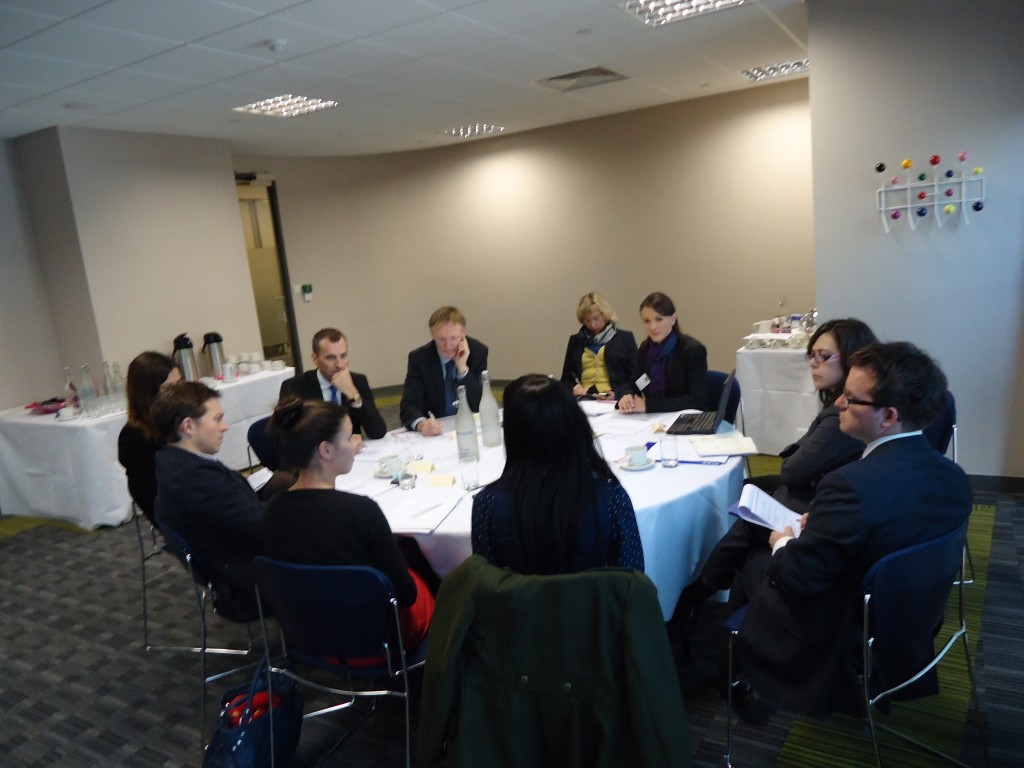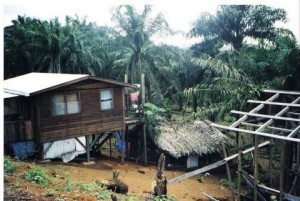In this film, an older generation of women share their experiences of inequality and their hopes for future generations. Now, girls can do anything – even run for president of the USA.
Category: Government
I Give An X
Why should you give an X in the upcoming UK election?
Because if you don’t vote you can’t complain. You can’t stand up for what you believe in. You can’t decide who decides important things like your reproductive rights as a woman or how elderly people are treated. You can’t have a say in how education, healthcare or any public services are run. People all over the world fight for democracy in their countries everyday so don’t take the right to vote for granted, show conviction and use it.
When I was a kid, my sister and I used to love Red Truck Tuesday. It was the day when a special red rubbish truck would go around the neighbourhood and collect peoples big unwanted items to divert them from landfill. Missy and I used to find all sorts of treasures just siting on the curb, including one of these:
What do you do when your government won’t address the pressing issue of urban air quality? You fly kites. Kites that are kitted out to measure air pollution. This is precisely what Float Beijing does.
Kite flying is a very traditional activity amongst the Chinese and serves as the perfect medium to get residents involved in something quite worthwhile. Float aims to empower residents and equip them with the knowledge and skills to fly kites and collect data on air quality levels.
Just before the Christmas break, I attended a round table discussion with the EU Commissioner for the Environment, Janez Potocnik. His visit to London and the roundtable discussion were coordinated by the Green Alliance and the CBI as part of a larger event on Resource Management. The discussion looked at three themes: resource efficiency, the environmental impacts of business and policy interventions.
As companies and organisations start to get a grip on their emissions another aspect of environmental impact is coming in to play – resource efficiency. At this moment in time as the global economy is still recovering from the recession, now is a better time than any for businesses to re-evaluate their inputs. Some facts shared by the Commissioner:
- We use 16 tonnes of resources per person, yet 6 tonnes of that goes to landfill
- 87% of EU businesses expect the cost of their inputs to increase
Commissioner Potocnik asserts that competitive advantage remains with those companies that can do more with less. As the economy is working towards recovery, now is the perfect time for industry to tackle growth. Companies can take advantage of increased output costs to manage what they have better.
And he’s right. Take mobile phones for example.
The mobile phone industry is far from collapsing. However, mobile phone manufacturers (and many other electronic devices) depend on certain precious metals – Coltan in particular – to operate. 80% of the world’s known supply of Coltan lives in the Democratic Republic of the Congo. And millions of people have died because of the conflict which has become an issue for both domestic and international governments as Coltan joins the ‘blood diamond’ clan, a precious mined resource with a finite supply.
This conflict and limited supply of the earth metal has forced several manufacturers to rethink growth and resource management out of necessity. We have seen a rise in mobile phone and electronic recycling. This is because it’s better to manage electronic waste and not send it all to landfill, but also because it’s cost effective for companies to take parts of the device – including processed Coltan – to use in the manufacturing of new phones. This is a bit of a weak example because companies are still mining raw Coltan but it does show that resource scarcity is already coming in to play and if companies are proactive in evaluating their supply chain it help them grow sustainably, rather than just in the short term.
Commissioner Potocnik spoke candidly about EU policy and government subsidies. He explained that the issues aren’t just about resource efficiency, but effective policy interventions and smart subsidies. He pointed out that tax breaks for company cars in the EU is 50 billion Euros a year. That’s huge. For cars! The challenge now is how can governments develop innovative subsidies that help with sustainable market growth. And we’ll see a lot of this over the next year as 2012 brings the introduction of the Green Deal, and the Green Investment Bank.
As the Commissioner points out, with current growth rates in China, India and Brazil, we’ll soon see 2-3 billion people to move towards middle class consumption and I think most people can agree that this fact concedes that we can’t continue to consume resources at the rate we have in the past.
While this all may sound terribly depressing and doom and gloom there are still interesting and potentially game changing opportunities that could hopefully lead us to a low carbon economy that uses resources efficiently. One example is through sharing. Yes, sharing between businesses. It may sound like an oxymoron but it just might change the way some businesses operate. Why can’t more companies develop business models based on sharing? Or even share resources, knowledge and planning with other businesses in non-competitive markets?
Another area to be explored is innovation funded through private investment. The Commissioner pointed out that the EU has only 1/10th of the private investment in new technologies than that in America. Maybe this is another arena to be explored for future development.
Overall the discussion with Commissioner Potocnik was fascinating. While I could sit there and think of my own solutions to our world’s resource problems, the Commissioner is actually responsible for working across several different EU economies with the task of attempting to build a more sustainable Europe. And I find that to be both a daunting but also inspiring task.
For Forests Sake
Back in 2003 I spent a good while in Guyana. Guyana doesn’t really make headlines. Gold and AIDS tends to be what puts Guyana on a map and in the news. Once famous for allegedly being the mystic place of El Dorado (because of its abundance of gold) and its exceptionally high HIV/AIDS rate (second highest in Latin America) you don’t really hear much else.
I loved Guyana. Sometimes my stories tend to trail off and I start to say “This one time in Guyana ..”. Like this one time, I was teaching four women at the Neighbourhood Democratic council office in Bartica how to use a computer with no internet connection, using an unreliable generator as a power source. I had to teach them how to turn it on, type and how to use windows 2003. Then just last year I received an email from them saying they had learned how to print and how to use the internet but had a few computer and non-computer related questions for me, like if I could help them install a webcam and whether of not I had a boyfriend. They had emailed the organisation I worked for asking for my email address.
Another Guyana memory, which actually brings me to the point of this post is walking in the rainforest and being told that if I turned twice in a row, I’d be lost and likely eaten by some sort of animal.
Three quarters of Guyana is covered by forest, which pretty massive. 76.6% in fact is the percentage of Guyana’s land covered by forest. Dense, hard to navigate forest.
So, you can imagine my delight when I read this week about Guyana in the paper.
Guyana has recently signed a historic deal with Norway to protect its forests. The deal means that Norway’s Government will pay Guyana’s Government around $250 million spread over several years, to preserve their forests. The money will go towards low carbon development projects, such as the installation and maintenance of solar panels to help bring power to isolated communities.
Why is this such an epic deal? Because rather than Guyana, a pretty poor country sell its natural resources to logging companies or convert its land area into livestock rearing ranches, it has chosen to preserve what’s there through support from a Norway, a well off country. Well done on all accounts. It shows grand innovation in sustainable economic development and fantastic leadership from both countries. It would be a very good thing if more deals like this are made.
Biobanking

This week saw the launch of the UK’s first conservation credit scheme. Conservation credits work very similar to carbon offsetting. If an area of land or water is to be developed, the developers can offset their impact by buying credits in biodiversity. Areas of biodiversity will then get developed in designated locations. Biobanking is becoming a really big emerging market.
While the idea of need to compensate for environmental damage seems like a good idea, you can’t manufacture biodiversity. Letting builders or developers essentially pay for environmental degradation, is not doing anything for conservation, if anything it’s just showing that everything has a price tag.
By issuing conservation credits, it inherently implies that a price can be put on biodiversity- but how can you measure and value this? And can it work retroactively? What about damage that’s already been done?
Like carbon offsetting, you are paying to alleviate guilt, pressure, bi-laws. But you cant really put a price on biodiversity. You can’t pay £500,000 to create a panda reserve because something that you want to build just might happen to obliterate a wild turkey population.



